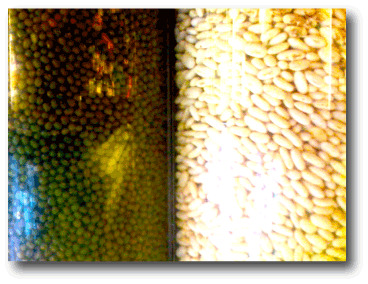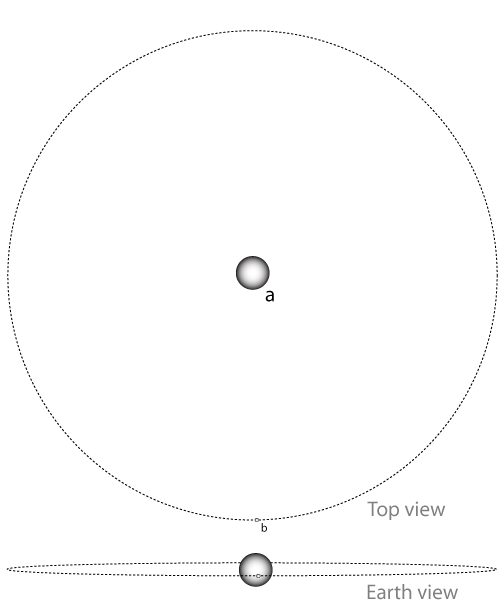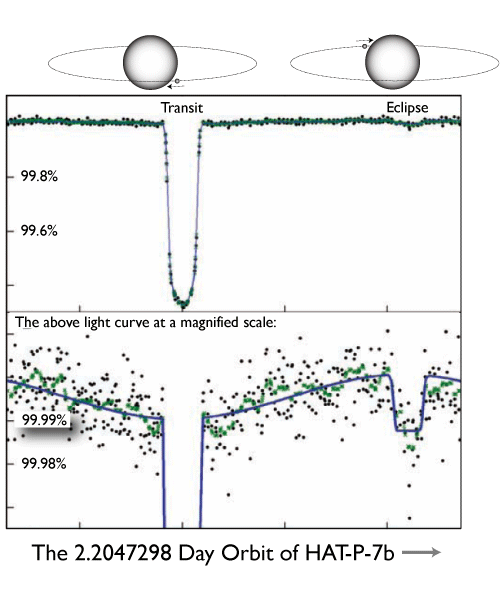M for all and all for M
I’m always impressed by the efficiency with which red dwarfs pack hydrogen, the stuff of flammable zeppelins, into such a small space: Gliese 1214 is more than twice as dense as led. The density of the Sun, on the other hand, is bubblegum by comparison.
Gliese 1214b’s orbital period is a mere 1.58 days. Its 0.014 AU separation from the system barycenter is the smallest yet measured for any planet. Yet because of the high red dwarf density, the star-planet configuration is actually rather spacious. Here’s the system to scale:
It’s interesting to compare this diagram with that of a genuinely close-in planet such as HAT-P-7b, which actually has a somewhat longer 2.2 day orbital period:

At a given period, a red dwarf fills much less of a planetary orbit than does a Sun-like star. If the occurrence rate of planets at a specified period is the same for stars of different masses, then one needs to look at $\sim(M_{\odot}/M_{\rm RD})^{2/3}$ times more red dwarfs than Sun-like stars to find a given number of transits with a particular period.
Gliese 1214b lies at enough stellar radii from Gliese 1214 that its a-priori transit probability was only about 7%. The Mearth survey currently covers only ~2000 stars, and so the fact that the discovery was made so quickly was probably not luck, but rather points to the existence of a very large number of low-mass planets orbiting small stars.
Let’s face it. The big dough goes to chase potentially habitable transiting planets. With this metric, the red dwarfs come out way ahead. If red dwarfs and Sun-like stars have equal occurrence fractions for planets with Earth’s mass and insolation, then a low-mass red dwarf has roughly four times the probability of a Sun-like star of harboring a transiting potentially habitable planet. Twice the temperature means one-sixteenth the area and the square root of sixteen is four. The red dwarfs also present a number of other advantages, see e.g. here, here, and here.
Ryan Montgomery and I have a recent paper out which foreshadows what I think is the inevitability of transit surveys that use the Mearth strategy to target true-Earth analogs the habitable zones of the lowest-mass red dwarf stars. Mearth is itself very well-positioned to expand in this direction. I also think that a lot of effort will continue to shift toward improved Doppler-velocity capability in the near-infrared (see, e.g. this recent paper by Jacob Bean and collaborators which describes the use of ammonia gas in a glass cell to imprint a forest of fixed reference lines on a K-band stellar spectrum).
A last note: Twelve-Fourteen-b is likely to become a favorite target for small-telescope observers, so I made sure to add it to the Transitsearch.org candidates table. Now that classes are done for the quarter, I’ve been going through the literature and adding or updating one or two planets a day. It’s tedious work, but I’ve noticed some interesting upcoming opportunities, which I’ll be writing about soon. For transit-themed ephemera and the latest celebrity gossip, look no further than the transitsearch twitter stream: http://twitter.com/Transitsearch.
And a postscript: In the comments, reader cwmagee points out that the implication of the post is that the HAT-P-7 and Gl1214 diagrams are to scale which eachother, but that’s not the case. He attached a version which shows a to-scale comparison of both systems:
Red dwarfs are small!






